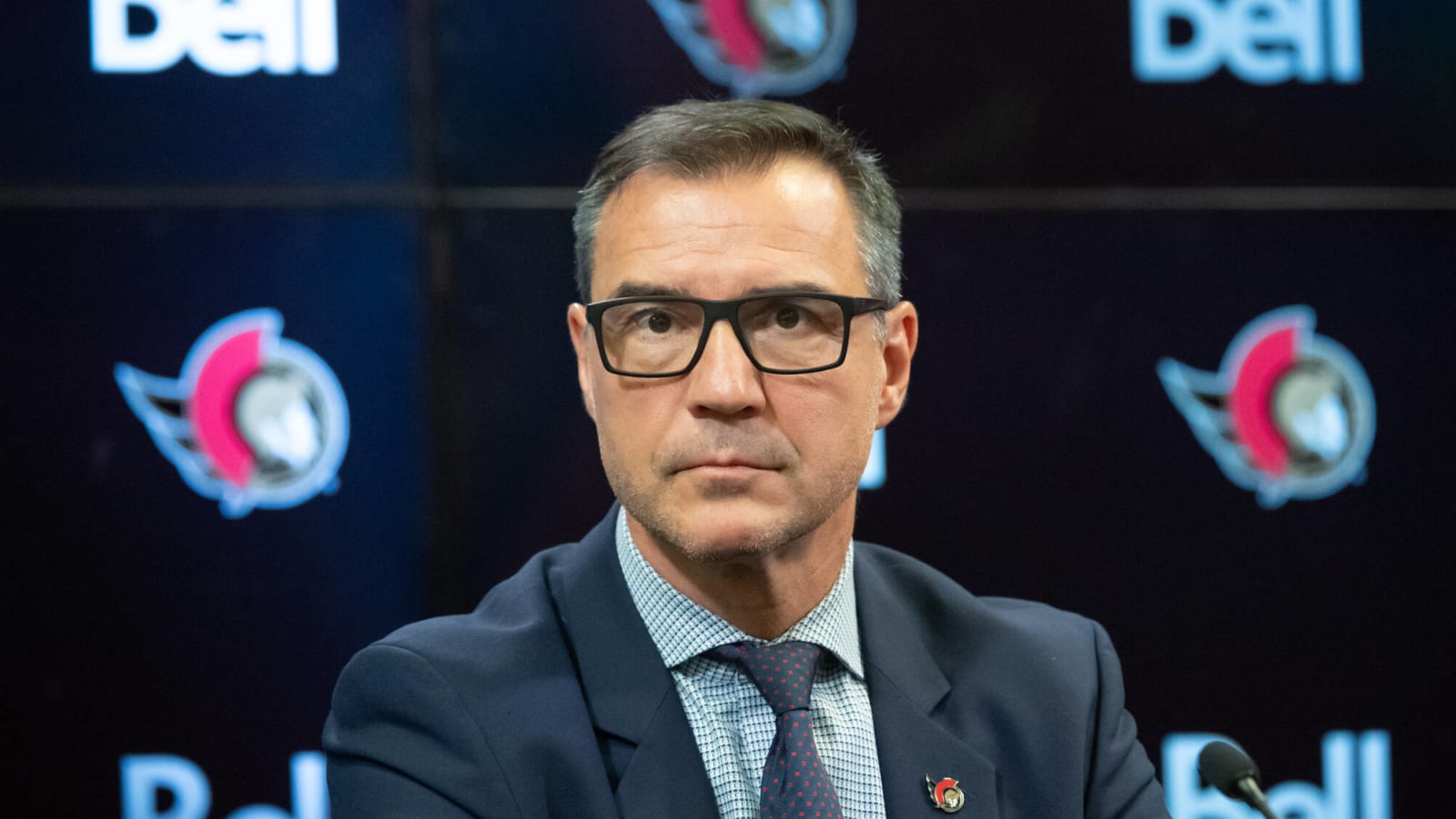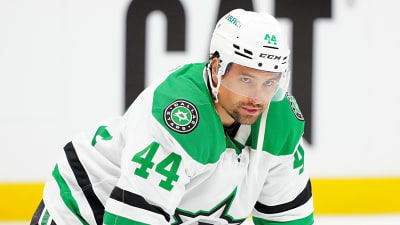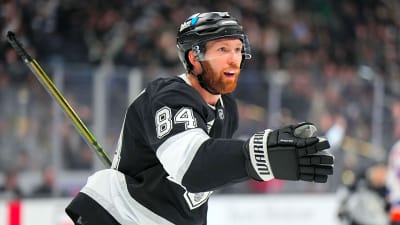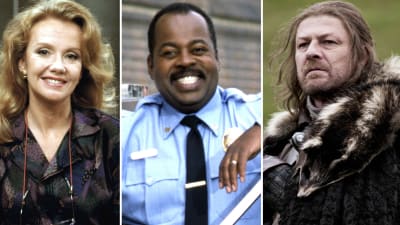
Ottawa Senators president and general manager (GM) Steve Staios has many problems to address this offseason, but let’s look at five that should be priorities. Why just five, you ask? Because if everything is a priority then nothing is. If that’s the case, then in 2024-25, Staios could become yet another Ottawa GM presiding over a failed season.
The good news is that on May 7, he hired Travis Green to be his team’s new head coach. Signing on a new bench boss was his top priority this summer, and he dealt with it quickly. The next day, he put the NHL on notice that he would keep his seventh-round pick in the upcoming NHL Entry Draft rather than forfeit it as punishment arising out of the Dadonov Affair. He seems to understand that the Senators prospect pool is a wreck, ranked 31st as it is after years of mismanagement by his predecessor, Pierre Dorion. (from Scott Wheeler, “Ottawa Senators are No. 31 in 2024 NHL prospect pool rankings”, The Athletic, 01/31/2024) Say what you like about Staios, but the man can make a decision.
So, where should he focus for the rest of the summer?
Fix the Mess in the Ottawa Senators’ Goal
No one will dispute that Ottawa’s goaltending was a weakness last season. Even so, Staios said at a year-end press conference, “I’ve said it before, but I do believe the goaltenders we have are better than their numbers. So, the question is, do you address that because they had off years?”
It’s hard to tell whether Staios really believes his puck-stoppers can be redeemed or whether he thinks he’s stuck with them. Korpisalo would be difficult to trade, given his poor performance and the four years remaining on his contract with an average annual value (AAV) of $4 million. Added to that, his contract has a modified no-trade clause that allows him to name 10 teams for which he won’t play. That could make it even tougher to trade him.
Forsberg’s contract, with its AAV of $2.75 million and one year of term remaining, would be easier to dump. But then, he’s not likely to fetch much in return. As for Mads Sogaard down in Belleville, his play this year with the big club showed he needs more seasoning before he sees more action in a Senators sweater.
The idea of buying Korpisalo out and then shopping for a new goalie on the free agency market this summer has been floated by many. But forget it. It’s true that the Senators wouldn’t need to buy him out with a lump sum. They could bring the effective cost of a buyout down to $10 million and change, but that would mean they’d need to carry $1.3 million in dead cap space for the next eight seasons. Ottawa simply doesn’t have the cap space to do that.
There has been speculation that the Senators could be talking to the Boston Bruins about Linus Ullmark. It may be a long shot, but you have to wonder whether Ottawa could snag him in exchange for Jakob Chychrun. The deal could be a straightforward player-for-player hockey exchange. Chychrun is under contract for another full season and comes with a cap hit of $4.6 million, while Ullmark also becomes a UFA at the end of the 2024-25 season and has a contract with an AAV of $5 million.
It looks like Staios is stuck between a rock and a hard place when it comes to goaltending. Even so, he must find a way out, and that path is most likely to stick with Korpisalo for next season and try to salvage him.
Overhaul the Senators’ Blue Line
At his introductory press conference on May 8, Green didn’t waste any time pointing out that his blue line had problems, saying, “It’s no secret when you look at the underlying numbers that defense is part of where we need to get better.” Staios can use all the insight Green can provide in coming to terms with the problems he faces with his d-Corps.
Perhaps the biggest question he faces is what to do with Thomas Chabot. He’ll soon be eclipsed as the Senators’ number one blue-liner by Jake Sanderson if he hasn’t already. That forces Staios to face up to whether he needs to trade Chabot and keep Chychrun or vice versa. Both are left-hand shots on a blue line that’s crowded with them.
It would be hard to get full value for Chabot in a trade because he has underperformed over the years. His contract runs another four years and features an AAV of $8 million. Chychrun, on the other hand, becomes an unrestricted free agent at the end of this season and will play for a reasonable $4.6 million. He would be easier to deal.
Even so, Staios may have no choice but to sell Chychrun at the trade deadline this season or sooner. That’s because it’s unclear that Chychrun wants to stay in the nation’s capital. Asked about re-signing at a year-end press conference last month, the 25-year-old D-man explained haltingly, “It’s a tough question. I mean, I … I… I dunno. I mean, I haven’t thought about … I honestly have not thought about that.” That sounds like Klingon to me, but to borrow a phrase from Captain Kirk, I think it probably means, “Scotty, beam me up!”
Yet the Chabot-Chychrun dilemma isn’t the only difficult decision Staios needs to make regarding his blue line. Take Erik Brannstrom, for example. He’s now a restricted free agent (RFA), and the Senators need to decide whether to re-sign him. He’s another left-hand shot, and while serviceable, he’s not worth much more than the $2 million he earns now. Even so, he’ll be using his arbitration rights to try to secure a significant increase in pay. So, does Staios keep him or deal with him to make room for a new acquisition or up-and-comers the likes of Tyler Kleven, Max Guenette, or Jacob Larsson?
And what of Travis Hamonic? At 33 years old, injured almost as much as he’s healthy, and with a contract paying him $1.1 million next season that features a no-movement clause, Staios must be wondering whether it’s time to buy him out. If he did, he’d have room for the likes of Jacob Bernard-Docker and others battling for a permanent spot on the 2024-25 roster.
Finally, everyone knows that the Senators need a right-shot defenceman. The problem is that they’re tough to find and may be too expensive for the Senators, given how tight the salary cap is.
Ottawa Senators Need an Identity
Back in March, when asked what his team’s focus should be with the 19 games remaining in their schedule at that time, alternate captain Claude Giroux replied, “It’s important that we play as hard as we can, and we can find our identity.” (from, Ian Mendes, “Claude Giroux opens about a ‘frustrating’ Senators season: ‘Missing some consistency’, The Athletic, 03/06/2024) That comment struck me as naïve. If his team hadn’t found its identity by that point in the season, did Giroux really think it could in the few games that remained?
Instead of an identity, the Senators seem to have developed schizophrenia. What started out last season as a squad claiming a finesse, high-octane style of hockey became one that touted itself as a gritty, physical, in-your-face team that never quits.
That the current edition of the Senators lacks an identity is obvious. Just compare them to the team of the early 2000s under then-head coach Jacques Martin with its attention to detail or the swashbuckling crew of 2007 that went to the Stanley Cup Final. And where did the “Pesky Senators” go?
With the likes of high-skilled players like Tim Stutzle, Drake Batherson, and Mathieu Joseph skating alongside the fiery Brady Tkachuk and hard-nosed skaters like Ridly Greig and Shane Pinto, the Senators have elements of both finesse and grit. It’s just that the team has had trouble meshing the two together. Fans saw that in Stutzle’s struggle to adapt to Martin’s more defensively-oriented style of play last season.ko
Green’s approach to coaching is probably the key to integrating grit and skill. He explained at his presser that he would emphasize the importance of building off what Martin tried to instill in the club last season – discipline, detail, habits, and professionalism. At the same time, he put his new club on notice, describing himself as “a demanding coach that wants the best out of my players. I want to push them to be their best, to tap their potential, and make them understand what that is.”
Senators Must Fill Gaps in Top-Six
Centreman Josh Norris is a big problem. He managed to play in only 50 games last season, registering a disappointing 16 goals and 14 assists. That’s a far cry from his 2021-22 season, when he put up 35 goals and 20 assists over 66 games. Most of his points came on the power play last season and his play at even strength was disappointing.
By the end of February, Norris was back on the long-term injured reserve list (LTIR). Questions now swirl about whether he’ll ever be the star player the Senators expected when Dorion handed him an eight-year contract in the summer of 2022, with an average-annual-value of $7.95 million.
He’s not likely to fetch much on the trade market, given his history of shoulder injuries and a salary that is far beyond what he delivers on the ice. Staios will have to explore the market for Norris this summer. If the terms of a potential trade are unattractive, he’ll probably take one more shot this season at restoring Norris to his former glory. If he can’t, then hard choices will need to be made at the end of the 2024-25 season. In case a buy out has crossed your mind, that would cost $1.45 million each year until the end of the 2035-36 season.
Staios will also need to deal with an unhappy Claude Giroux, and there may be no better time to do that than this summer. The alternate captain didn’t hide his frustration with his team at the end of last season and said, “Where I am in my career, I want to play in the playoffs. I want to be successful. I want to have that rush.”
Staios also needs to find a solid right-hand shot to replace Vladimir Tarasenko. Given the Senators’ miserable experience in the last two seasons with Tarasenko, Alex DeBrincat, and Dominik Kubalik, he couldn’t be blamed for being gun-shy about doing that. Although the Senators don’t have much cap space, they can probably pick up a decent right-winger in the free-agency market this summer.
Trades are hard to do in the NHL, given the salary cap that most teams, including the Ottawa Senators, find themselves up tight against. It forces teams into dollar-for-dollar player exchanges, and that’s hard to do. That’s why the most consistently successful teams in the league are those that draft and develop well. The ability to develop talent is a strength Green is believed to possess.
Senators Need Fourth Line With Punch
Greig, Shane Pinto, and Joseph form a potent third line, but that’s as deep as the bottom six gets. The five players who were regulars on the fourth line last season managed only 36 points between them – that’s just 5% of the team’s total points.
Winning teams all have fourth lines that can be a scoring threat, and Staios knows he needs one, too. With eight goals and 10 assists last season, RFA Parker Kelly probably earned himself a spot on the right side of the fourth line. Yet the other two slots are probably open. Last season, Zack MacEwan was underwhelming, Mark Kastelic at the center was forgettable, and Jiri Smejkal was missing in action.
That gives younger players a shot at a fourth-line roster spot based on their training camps this fall. Staios must be looking at Angus Crookshank in Belleville, who racked up 46 points in the 50 regular season games he played there this season. That’s good enough to rank him the number two points-getter with the Baby Sens. Not only that, but he looked like a bona fide NHLer in the 13 games he played with Ottawa last season, marking up the score sheet as he did for three points.
Boris Katchouk impressed in the 21 games he played last season, and Staios will no doubt give him a long look for a spot on the fourth line.
Senators Journey to Playoff Contender a Long One
What should be clear to Staios and his coaching staff is that while the Senators may be young, talented, and full of potential, they have a long way to go before they become a playoff team. Sure, they need to make some changes in their lineup, but perhaps the thing they need the most is an identity and a winning culture. It’s up to Staios and Green to lead them to that this summer.
More must-reads:
- Three NHL teams that have missed the mark so far this offseason
- NHL Eastern Conference free-agency recap
- The 'First-overall NHL Draft picks' quiz
Breaking News
Trending News
Customize Your Newsletter
 +
+
Get the latest news and rumors, customized to your favorite sports and teams. Emailed daily. Always free!








